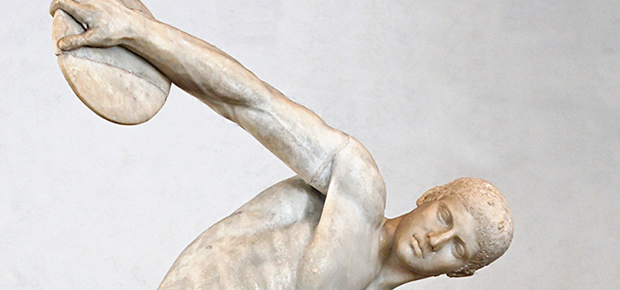
1.14 The Sculpture
The Athenians, in rebuilding their city after the Persian invasion, first restored the agora, omitting the Acropolis. The motivation for this choice lay in the need to restore the daily life on an orderly, or perhaps even in the scarcity of resources. Aristotle said a well-known and well-reasoned judgment: "The Acropolis befits the oligarchy and the government of a single man, the pianuta to democracy ". But in less than a generation, things changed. The Democrazia trionfante, rich, self-reliant and imperialist, Guided by Pericles, Back all'Acropoli, that was a venerable place, and made him not only his greatest religious center, but also the visible symbol of Athenian power and the glory. The man in charge of the development program was Phidias, the most famous of all Greek sculptors, an Athenian by birth, who made important commissions in Delphi, You, Olimpia. The architects of the Parthenon were Ictinus and Callicrates. We do not know who they were sculptors; of course there were many, but certainly one was responsible for the conception and design. Could be Fidia but there are no reliable evidence about. The statues in front of the temples and, or in the tombs and palaces, carefully carved capitals of the columns, the jambs and lintels carved, all of these had a history that dated back centuries around the Aegean, in Egypt and the Middle East was thousands of years old. But the Greeks introduced something new and of itself sufficient to confer to their temples, a character who had no respect elsewhere. They joined the sculpture as an integral element to the structure, decorated with elegant moldings to antefixes, the metopes and friezes and pediments, in which the artists only knew ninb portray the individual figures of mythology, but came to play groups intricate and imaginative. Although the sacred buildings had a pattern relatively fixed, the bas-reliefs kept pace with the times, taking place the statues in the round until the Hellenistic age, as in the altar of Pergamon. It 'the same phenomenon is observed in the art of relief, in the minting of coins. While in a restricted freedom of schemas, the incisione, with its abundance of subjects and themes, seems to have no limits. The Greek coins are second to none and every polis, alloy or monarchy, for they were small, trying to find top-notch artists to draw and make coins when needed.
The entire Greek sculpture, until the end of the fifth century and, in large part, even after, was directly linked with religion. Athletics was an integral part of religious festivals. The Greeks considered the natural celebrate the acts of bravery as well as with poems, sacrifices and prayers. The statues of the winners, as the choral odes, were offered a thank you from the community, or by the tyrant, representing. The statues do not actually reproduce the athletes as individuals, were not portraits but ideal types, and it was significant that the same type were used indiscriminately for both men and gods. The nude is an art form invented by the Greeks, as well as the opera was invented in Italy in the seventeenth century. In the costumes of the archaic aristocratic spread the use of race barefoot in games, use indicated by Thucydides as a feature which distinguished the Greeks from the barbarians. The male of, come Apollo, Zeus, Poseidon and all other, were always depicted naked. Goddesses, only Aphrodite was depicted naked. It 'also undeniable that in these sculptures, even in those archaic, This was the erotic elemnto, mixed with the religious.
The inspiration hieratic almost always present in archaic sculptures, is no longer present in the classical sculptures. And this was due both to greater mastery of the material processing, floors of bronzo, and a more precise and detailed knowledge of the human body. Also, they were trying to find and express the ideal, and believed that the right way was that of mathematical proportions. Hence the famous paradox attributed by Pliny the Elder to Lysippus of Sicyon, Alexander's favorite sculptor Praxiteles and maximum teacher with the new naturalistic style that developed in the fourth century. He argued that artists often depict men as they really are, as he depicted them as they appear. Much of the history of Greek sculpture can be written in mathematical terms, expressing the proportions between the various elements of the human figure and the relationships between them, conceived as many floors than solids. Until the late fourth century, the statues were designed to be seen from the front, with smooth contours to the four cardinal points, front, the hips and shoulders. Apart from the sculptures integrated into the architecture, clasiche large statues are known to us through the many Roman copies. The Romans were devotees of Greek statuary, and many emperors did portray themselves and their preferences as Greek heroes, and since I knew century copies excellent with the method known as "points".
Phidias was especially praised for its statues "chryselephantine" Athena (in the cell of the Parthenon) and of Zeus at Olympia. The word means "covered with gold and ivory" used in large quantities, and the statues were truly colossal. This was another statue of Athena, a bronze colossus which took nine years of work and towering in the middle between the Parthenon and the Erechtheion, according to a depiction of Athenian coins of the Roman period. The more the figure of a god was idealized, much less could be distinguished man. The only alternative that could provide an imprint of divinity was to increase the size far above the human stature.




